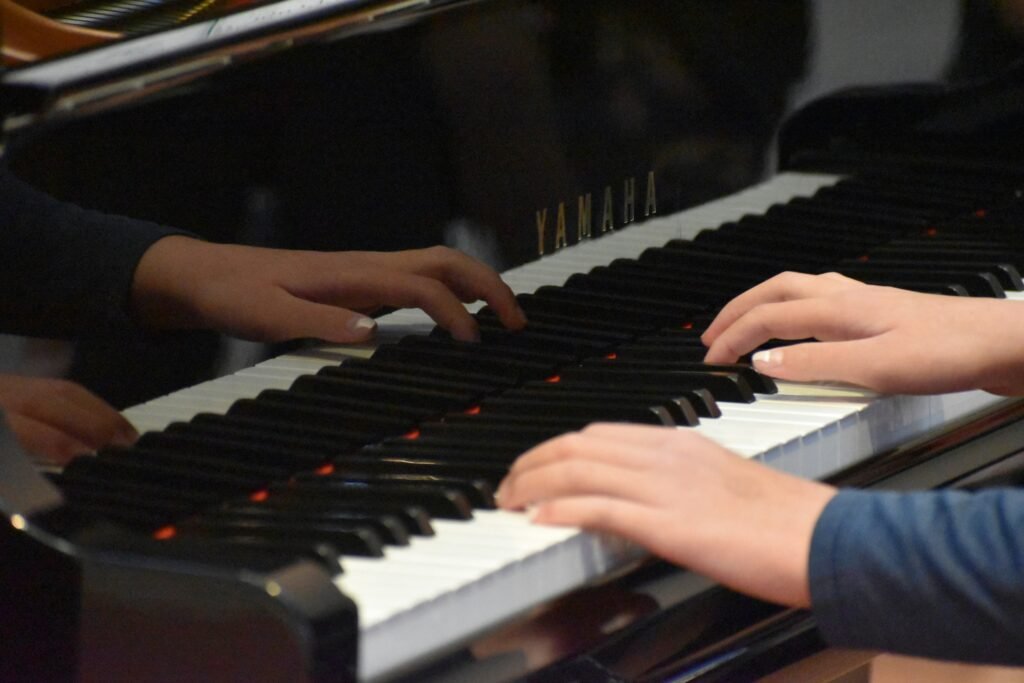Whether you own a grand piano, baby grand piano, or an upright piano, maintaining your instrument is crucial to ensure it stays in pristine condition and produces the beautiful sound you love. Proper maintenance not only extends the lifespan of your piano but also enhances its performance, helping you achieve the best musical experience. In this comprehensive guide, we’ll explore the essential tools you need to maintain your piano, diving deep into their uses, benefits, and tips for effective care. We’ll also discuss advanced techniques and extra accessories that can elevate your maintenance routine.
Maintaining a piano is more than a task; it is an art form. Each tool, each technique, and every effort you make contributes to preserving the legacy of a magnificent musical instrument. Let’s delve deeper into why piano maintenance is vital and explore every aspect in greater detail, so even if you’re new to piano care, you’ll find it approachable and rewarding.

Why Piano Maintenance Matters
Pianos, whether grand pianos, baby grand pianos, or upright pianos, are intricate instruments crafted from thousands of parts. Neglecting maintenance can lead to:
- Uneven sound quality.
- Sticky keys and worn-out hammers.
- Shortened lifespan of strings and other components.
Environmental factors such as temperature and humidity changes can exacerbate wear and tear, particularly on sensitive wooden components. The grand piano, with its expansive soundboard and delicate mechanisms, is especially susceptible. Regular maintenance ensures your piano remains resilient against these challenges, allowing you to enjoy consistent sound and aesthetics.
Moreover, maintaining a piano is a way of showing respect to its craftsmanship. A well-maintained upright piano or baby grand piano not only looks beautiful but also becomes a cherished heirloom, preserving its value over generations.
Investing time in regular upkeep ensures your piano remains a source of musical joy for years to come. Whether you’re a beginner, an intermediate player, or a professional pianist, understanding the maintenance process is an integral part of piano ownership. Let’s examine the tools that will empower you to keep your instrument at its best.
The Essential Tools for Baby Grand Piano and other Piano Maintenance
- Tuning Hammer
A tuning hammer is a must-have tool for maintaining the pitch of your piano. Pianos naturally go out of tune due to environmental changes, especially in grand pianos and baby grand pianos, as their longer strings are more sensitive to humidity and temperature fluctuations.
Key Features:
- A star-shaped tip for fitting tuning pins.
- A wooden or fiberglass handle for a firm grip.
Tips for Use:
- Always turn the hammer gently to avoid damaging the tuning pins.
- For beginners, it’s wise to practice on an old or less valuable upright piano before working on your prized instrument.
Advanced Insights:
- Pair your tuning hammer with an electronic tuning device for precise pitch adjustments.
- Learn the basics of harmonic tuning to achieve a more balanced sound.
- Develop a tuning schedule that aligns with your piano usage and environmental conditions.
- Piano String Gauge
This tool helps measure the thickness of piano strings, which is essential when replacing broken strings in a baby grand piano or an upright piano.
Benefits:
- Ensures accurate string replacement.
- Prevents mismatched tension that can harm the piano’s frame.
Pro Tip:
- Always have spare strings in various gauges to handle emergencies without delays.
- Learn to match the string gauge with the correct tuning pin tension to avoid over-tightening.
- Use a magnifying glass to ensure accurate readings and prevent errors during replacements.
- Piano Cleaning Kit
Dust and debris can accumulate on your piano over time, affecting its appearance and functionality. A dedicated cleaning kit for your grand piano or upright piano is indispensable.
What’s Included:
- A microfiber cloth for polishing.
- A soft brush for cleaning between the keys.
- Specialized cleaning solutions for the finish.
Cleaning Tips:
- Use a damp, lint-free cloth for daily cleaning.
- Avoid harsh chemicals that can damage the finish of your baby grand piano.
Advanced Cleaning:
- Use a vacuum with a narrow nozzle attachment for deep cleaning inside the piano.
- Apply wax or polish designed for piano finishes to maintain the shine and prevent scratches.
- Clean pedals with metal polish to maintain their luster and functionality.
- Key Puller
A key puller is a tool designed to remove keys from your upright piano or grand piano for deeper cleaning or repair.
Advantages:
- Enables access to hidden areas for cleaning.
- Helps in diagnosing and fixing sticky keys.
How to Use:
- Gently insert the tool under a key.
- Apply light pressure to lift the key without causing damage.
Additional Uses:
- Use the tool to replace worn or damaged key felts.
- Combine with a soft brush to clean under the keys.
- Check for alignment issues during key removal and repair.
- Damper Spoon Adjuster
This tool adjusts the dampers that stop the strings’ vibrations when a key is released. Proper damper function is critical for a grand piano to produce clear and precise notes.
When to Use:
- When dampers don’t fully mute the strings.
- For fixing inconsistencies in note clarity on a baby grand piano.
Additional Benefits:
- Improves the sustain pedal’s responsiveness.
- Ensures uniform damping across all keys, enhancing tonal balance.
- Prevents residual vibrations that can cause unwanted sound distortions.
- String Mute
String mutes are used during tuning to silence specific strings, allowing you to focus on individual notes. These are especially useful for upright pianos, which often have strings in close proximity.
Types of String Mutes:
- Rubber mutes: Ideal for easy insertion.
- Felt strips: Great for muting multiple strings simultaneously.
Pro Tip:
- Always position the mute carefully to avoid damaging the strings.
- Experiment with different mute materials to find one that suits your tuning style.
- Combine with an electronic tuner for more precise adjustments.
- Action Regulator Tools
The piano’s action mechanism requires precise adjustments to ensure consistent key response. These tools are crucial for baby grand pianos, where a delicate touch is often desired.
Essential Action Tools:
- Regulating screws.
- Action spacers.
Benefits:
- Enhances the touch and responsiveness of your keys.
- Prevents uneven key travel and hammer alignment.
Advanced Techniques:
- Learn to measure key dip and hammer strike distance to achieve precise regulation.
- Practice adjusting the let-off point for a smoother playing experience.
- Use guides and templates to ensure precise spacing during adjustments.
- Piano Bench Adjustment Wrench
A stable bench is vital for proper posture during practice and performance. This tool ensures your bench is securely tightened, complementing the elegance of your grand piano setup.
Pro Tip:
- Choose an adjustable bench for added versatility.
- Regularly check the bench’s joints and screws to prevent wobbling.
- Use felt pads under the bench legs to protect flooring and reduce noise.
- Hygrometer and Humidity Control System
Humidity fluctuations can wreak havoc on wooden components, especially in a grand piano or upright piano. A hygrometer monitors humidity levels, while a humidity control system stabilizes them.
Why It’s Important:
- Prevents wood cracking and warping.
- Maintains consistent tuning stability.
Advanced Tips:
- Use a dehumidifier in high-humidity areas and a humidifier in dry climates.
- Consider a complete climate control system for larger grand pianos.
- Monitor and maintain relative humidity levels between 40-50% for optimal results.
Piano Maintenance Tips for Longevity
Regular Cleaning
- Wipe down the exterior of your baby grand piano weekly.
- Vacuum the inside once every six months using a soft attachment.
- Use specialized cleaning tools for intricate parts, such as the action mechanism.
Scheduled Tuning
- Tune your grand piano at least twice a year.
- For heavily used instruments, consider quarterly tuning.
- Keep a tuning log to track pitch stability over time.
Control the Environment
- Keep your piano in a room with stable temperature and humidity.
- Avoid placing it near windows, radiators, or air conditioning vents.
- Use curtains or blinds to protect your piano from direct sunlight.
Professional Maintenance
- Schedule an annual checkup with a professional piano technician.
- Have your upright piano thoroughly inspected for hidden issues.
- Invest in regular action regulation to maintain optimal performance.
- Request advanced services like voicing adjustments to refine tonal quality.
Conclusion
Maintaining your grand piano, baby grand piano, or upright piano doesn’t have to be daunting. With the right tools and regular care, your piano will continue to produce melodious tunes for years to come. Investing in quality tools and following the guidelines in this article will ensure your piano remains in peak condition, enhancing both its performance and your playing experience.
By adopting advanced techniques and incorporating professional-grade tools, you can elevate your piano’s maintenance to a new level. Start incorporating these tools and techniques into your routine today, and let your piano shine as the centerpiece of your musical journey! From its harmonious notes to its timeless beauty, your piano deserves the care and attention that reflects its artistry and value.
For further readings: https://pianopassion.org/












Leave a Reply